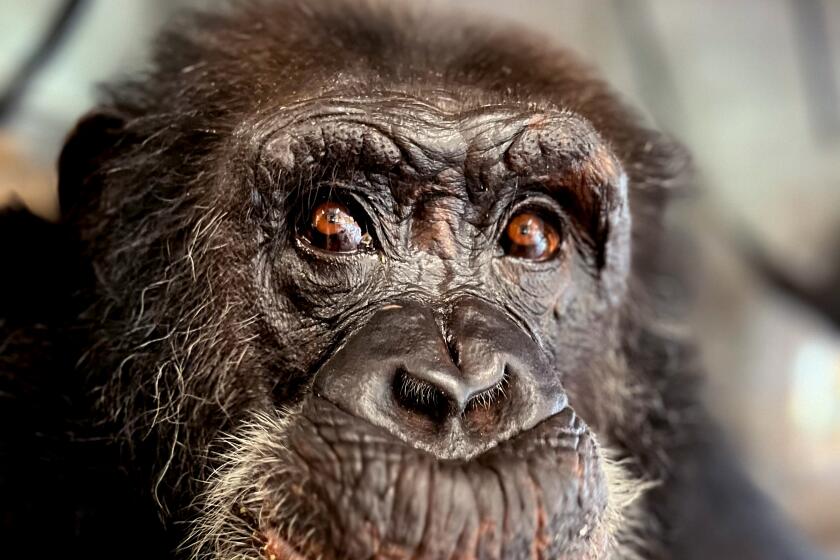Artistry but with flaws
A month before her 44th birthday, Nina Ananiashvili brought to the role of Giselle so much expressive detail -- such a head-to-toe compendium of ideas, feelings, nuances illuminating the choreographic text -- that her performance Saturday at UCLA’s Royce Hall became a testament not just to her exceptional artistry but also to a Soviet training and coaching system that once reliably produced dancers of her caliber, generation after generation.
If a gulf existed between her achievement and that of the young dancers in the State Ballet of Georgia (the company that she’s directed since 2004), the reason may stem partly from the difference in age and experience but also from what’s happened to the continuity of ballet tradition in the post-Soviet era.
Danced to a very slow and sometimes harsh recording of the score (mostly by Adam, with additions by Minkus and Burgmuller), the Georgian “Giselle” featured old-fashioned cutout sets by Viacheslav Okunev, problematic lighting credited to Paul Vidar Saevarang and a staging plan by Alexei Fadeyechev that combined all of Act 1’s showpiece choreography into one endless divertissement.
Once a star dancer in the Bolshoi Ballet, Fadeyechev also changed the peasant pas de deux (a Russian tradition) into a sextet, gave Albrecht a housesitter for his seldom-used cottage in Act 1 and asked the ducal hunting party in the same act to tramp over dusty roads wearing Okunev’s silks, satins and cloth-of-gold. In addition, the Saturday evening performance suffered from unison problems in the first half and a strangely heavy-footed Wili corps in Act 2 that left audience interest solely in the keeping of the leading dancers.
Ananiashvili’s harrowing mad scene achieved tragic stature and her technical accomplishments in the following act often became statements of emotions and energies that the character never had time to express in her short life. Merely standing over Albrecht at the end of his ordeal, one arm in the air, marked a spiritual transfiguration -- one that would forever rescue Giselle’s soul from the power of the Wilis.
Vasil Akhmeteli partnered Ananiashvili skillfully as Albrecht, spent too much time turning away from her during her mental breakdown to make his suffering a component in the scene and marshaled decent if unremarkable technique in Act 2 except for his stratospheric double-cabrioles.
Irakli Bakhtadze proved a sympathetic Hilarion, with so much elegance of line and suavity in his jumps that his performance became a down payment on danseur noble status. Nino Ochiauri danced Myrta capably, but the staging mandated too many strange exits -- including fussy sorties for foliage -- undermining her effectiveness. Tsisia Cholokashvili and Ekaterine Chubinidze served as her assistants.
The UCLA Live series seldom presents 19th century ballet, and though it was a revelation to see Ananiashvili at relatively close range, the Royce Hall stage wasn’t ideal for this “Giselle.” For instance, Ananiashvili showering Akhmeteli with flowers in Act 2 took place so far into the wings the action was all but invisible to anyone in the left audience section.
What’s more, the campus series seldom has to cope with the vagaries of ballet cast changes, so only at the beginning of Act 2 on Saturday night did the audience learn it was seeing Akhmeteli as Albrecht, not Bolshoi star Andrey Uvarov (listed in the program but off the tour because of injury).
Watching the State Ballet of Georgia grow to international status could be a major pleasure in the next decade. But in-depth coaching is clearly needed, not just in this “Giselle,” but in such Balanchine classics as “Chaconne,” danced none too well on Thursday.
The talent is there, but Ananiashvili must create something like the support system that brought her to greatness. What audiences saw at UCLA is only a start.
--
More to Read
The biggest entertainment stories
Get our big stories about Hollywood, film, television, music, arts, culture and more right in your inbox as soon as they publish.
You may occasionally receive promotional content from the Los Angeles Times.










